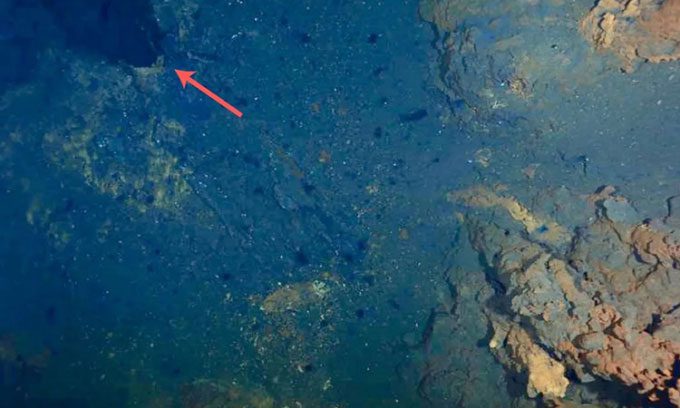Max Planck Institute for Marine Microbiology has discovered an unusual species thriving on hydrogen at depths greater than 2500 meters beneath the Arctic sea ice.
The dark and frigid deep waters, which can explode due to volcanic activity, might not seem like suitable habitats for life. However, a new finding published in the journal Nature on March 9 has astonished scientists.
During a sampling trip to the underwater volcanic ridges in the Central Arctic and South Atlantic, where hydrothermal vents—cracks deep in the ocean at tectonic plate boundaries—release oxygen-free but iron, manganese, copper, hydrogen, methane, and sulfide-rich hot fluids, a research team from the Max Planck Institute for Marine Microbiology (MPIMM) in Germany unexpectedly discovered a new life form, named USulfurimonas pluma, part of the Sulfurimonas genus.

A hydrothermal vent spewing smoke on the seabed in the Central Arctic. (Photo: MPIMM).
“We collected hydrothermal smoke samples from extremely remote areas that had never been studied before. It was a complex task because they are not easy to locate,” said the research leader Antje Boetius. She further explained that the smoke samples were taken from depths greater than 2500 meters beneath the Arctic sea ice.
After collecting samples with the research vessel Polarstern, Boetius and her colleagues examined the composition and metabolic processes of the bacteria in the water.
Until now, the Sulfurimonas genus was known to utilize sulfide as an energy source, but this new species is remarkable for using hydrogen from the vent plume as an energy source. The research team also analyzed the bacterium’s genome and found significant adaptations, lacking many characteristic genes compared to its relatives, yet well-organized to support growth in this harsh environment.
“We believe that the hydrothermal flow not only disperses microorganisms from the vents but may also connect the open ocean ecosystems with the deep-sea habitats,” co-author Massimiliano Molari from MPIMM added. “We need to reassess the ecological role of Sulfurimonas in the deep ocean. They may be much more important than previously thought.”


















































